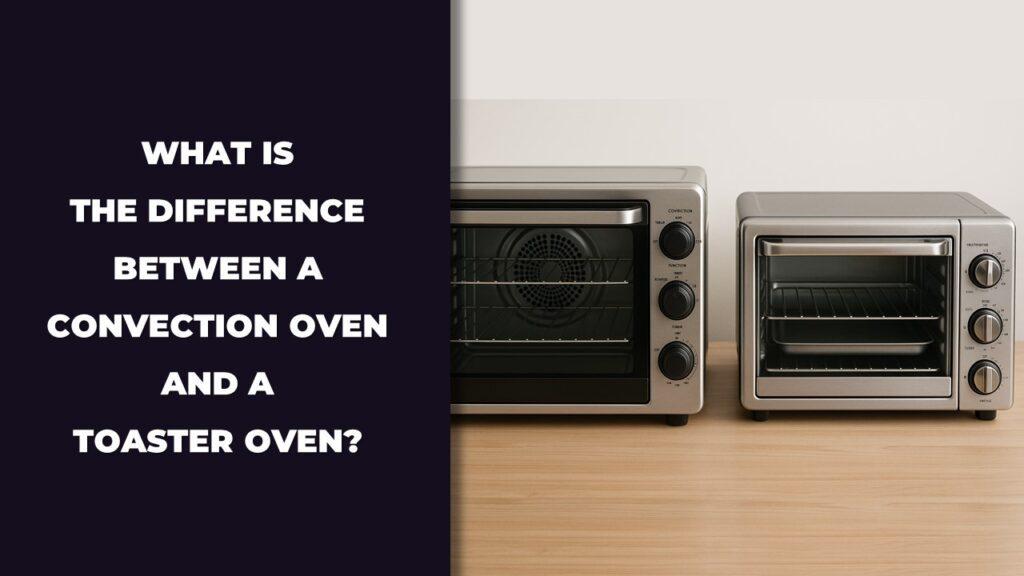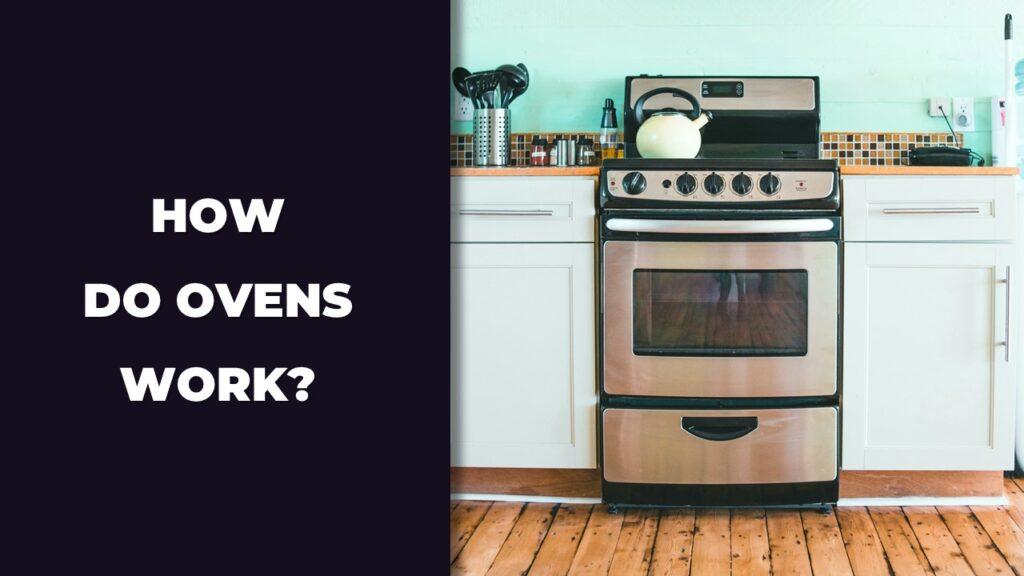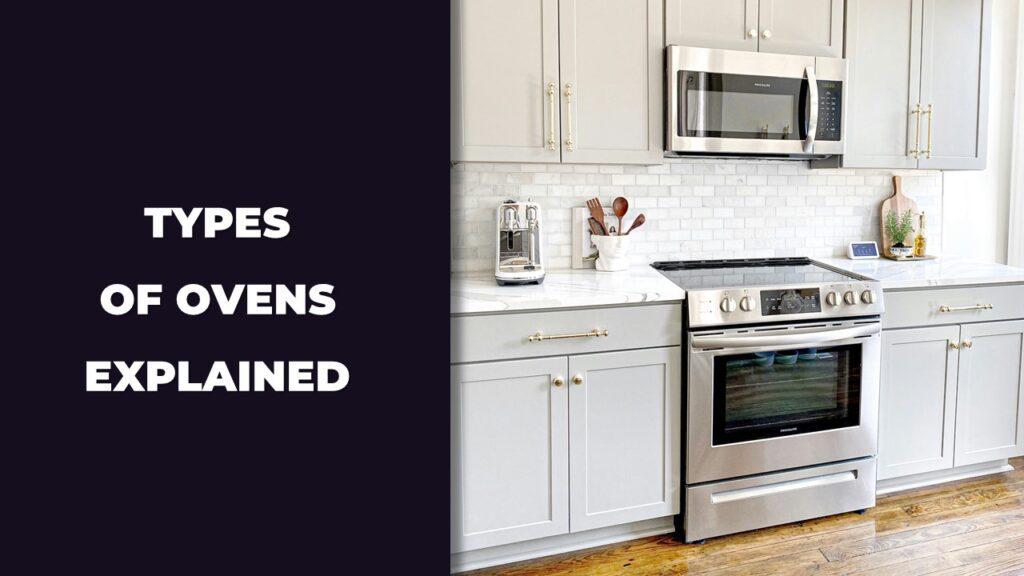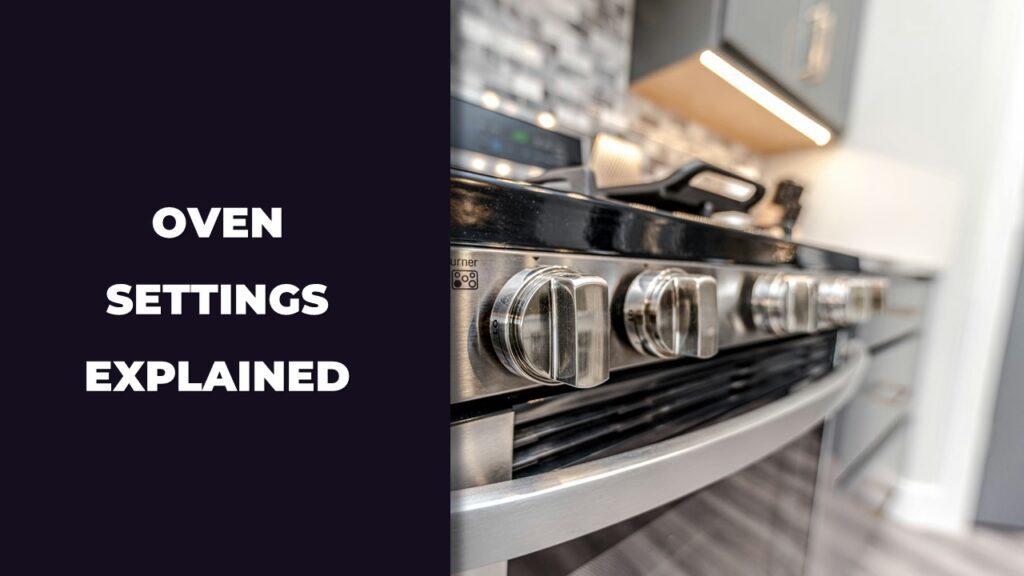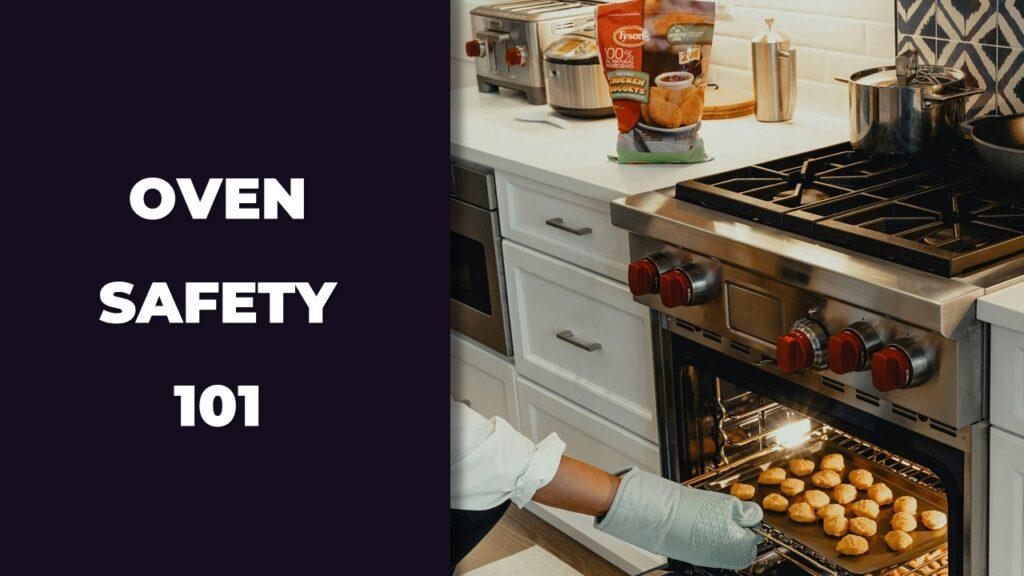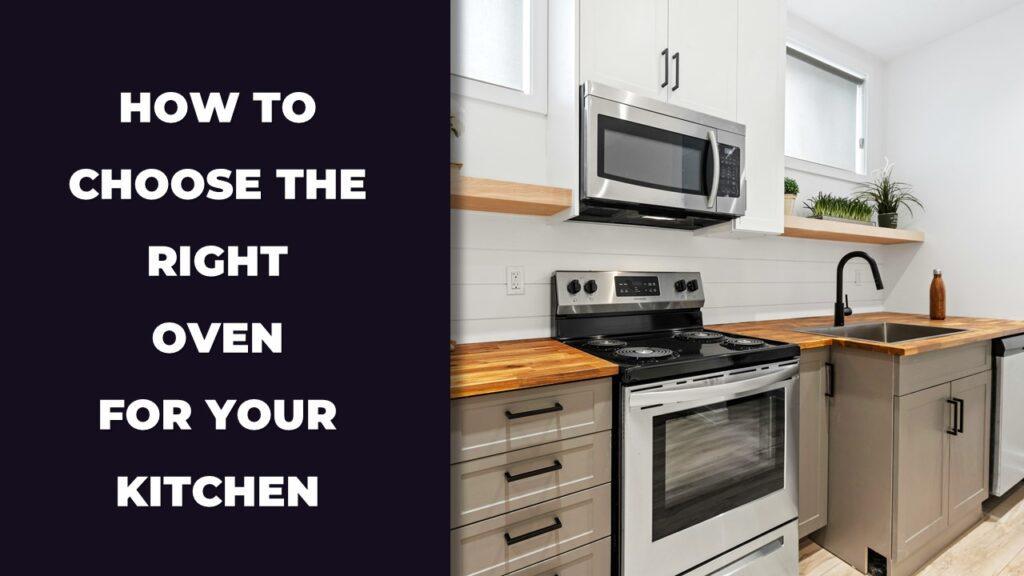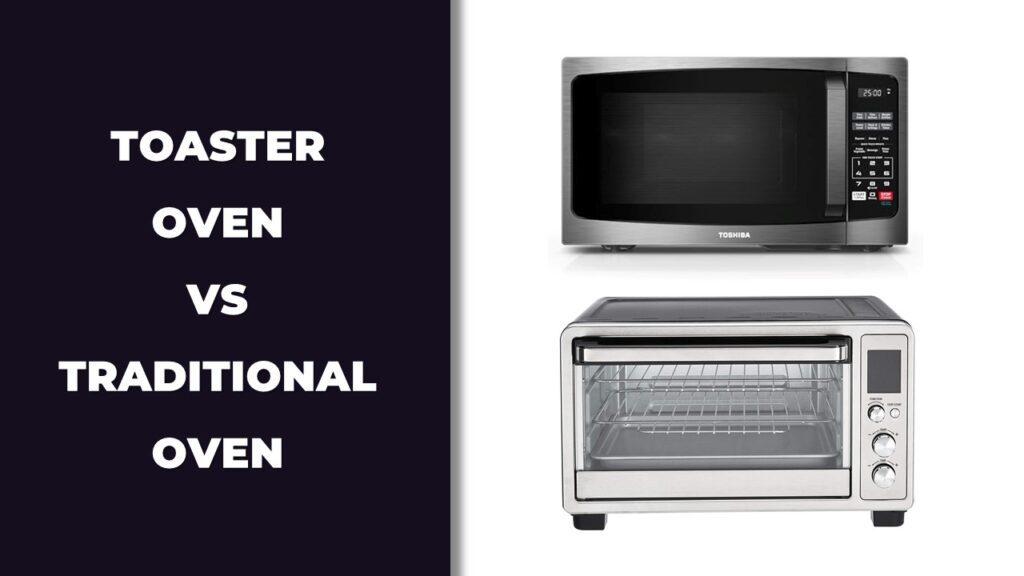
Toaster ovens are compact, energy-efficient appliances ideal for quick meals and small batches. Traditional ovens offer more space, better heat distribution, and versatility for large or complex cooking tasks. Use a toaster oven for toasting, reheating, or single servings. Use a traditional oven when cooking for a family or baking large dishes.
In this article, we’ll walk through how these two ovens compare in everyday use. We’ll cover cooking capacity, energy use, heating time, cost, ease of cleaning, and more.
Quick Comparison: Toaster Oven vs Traditional Oven
Toaster ovens are compact, energy-saving appliances ideal for small tasks like toasting or reheating. They preheat quickly and are easy to clean. Traditional ovens, on the other hand, offer more space, better heat consistency, and versatility for bigger meals or multiple dishes.
Here’s a side-by-side look at how they compare:
| Feature | Toaster Oven | Traditional Oven |
| Size | Compact, sits on the counter | Full-sized, built-in or part of a range |
| Cooking Capacity | Small portions, single trays | Large meals, multiple trays |
| Preheating Time | Fast (2–5 mins) | Slower (10–15 mins) |
| Energy Efficiency | High for small tasks | Less efficient for small meals |
| Heat Distribution | May be uneven | Generally even and consistent |
| Installation Needed | No | Yes (especially gas or wall ovens) |
| Cost Range | $40–$300 | $500–$2,500+ |
| Cleaning | Easier, smaller surface | Harder, more interior space |
| Fuel Type | Electric only | Electric, gas, or propane |
Each has its place, depending on your cooking habits, kitchen space, and how much food you’re actually making.
What Is a Toaster Oven and How Does It Work?
A toaster oven is a small electric oven that sits on your countertop and uses heating elements at the top and bottom to cook, toast, reheat, and bake small portions of food. It heats up quickly, doesn’t use much power, and is perfect when you just need to throw something in for a quick snack or dinner for one.
If you’ve ever wanted to bake a few cookies without firing up your big oven or reheat pizza without making it soggy, that’s where a toaster oven shines. It’s super handy for college students, small kitchens, or anyone who doesn’t need to cook big meals every day. Some models even have convection settings or air fry functions built-in, which adds more flexibility than people expect.
But keep in mind, it’s still a compact appliance. If you try to cram in a full frozen lasagna or roast a big chicken, you’re probably going to struggle. The heating can be uneven in some models, and you’ll have fewer rack positions. That said, for small-batch cooking, it’s often the easiest and most energy-friendly tool you can have on your counter.
What Is a Traditional Oven and What Can It Do?
A traditional oven is a full-size cooking appliance, either built into your kitchen wall or combined with a stovetop range. It uses electric coils or gas burners to heat the entire oven cavity, making it great for cooking large meals, baking multiple trays, or handling more serious recipes.
If you’re cooking for a family or love hosting dinner parties, you probably already know how much you rely on your oven. From roasting turkeys to baking multiple trays of cookies, this is the kind of oven that’s built to take on the heavy lifting. The insulation is better too, so it holds temperature more consistently across the whole interior.
But it’s not always perfect for everyday use. Traditional ovens take longer to preheat, use a lot more electricity or gas, and heat up your whole kitchen—something you’ll definitely notice in the middle of summer. Still, if you need flexibility, space, and power in your cooking routine, this is the one you count on when your toaster oven just can’t keep up.
Toaster Oven Pros and Cons
A toaster oven is great for quick meals, smaller spaces, and saving on energy bills. But it’s not built for everything. If you only cook small portions and want something fast and convenient, it’s a solid pick. If you need more space or cook full meals often, you might hit its limits.
Here’s what works and what doesn’t:
Pros
- Takes up little space: Ideal for apartments, dorm rooms, or small kitchens.
- Heats up quickly: Usually ready to cook in just a few minutes.
- Uses less electricity: Costs less to run for light, everyday cooking.
- Great for reheating leftovers: Food stays crisp without drying out.
- Easier to clean: Smaller size means faster cleanup.
Cons
- Limited cooking space: Can’t fit large dishes or multiple trays.
- Uneven heat in some models: You might need to rotate food for even results.
- Electric only: Won’t work during power outages.
- Not made for big meals: Struggles with recipes that need steady, even heat for long periods.
Traditional Oven Pros and Cons
Traditional ovens are the workhorses of the kitchen. They’re great for large meals, multiple trays, and complex recipes. But they’re slower, use more energy, and take up more space. If you cook a lot or need flexibility, they’re usually worth it.
Here’s the honest breakdown:
Pros
- Can handle large meals: Perfect for baking, roasting, or cooking in bulk.
- More cooking functions: Bake, broil, roast, or even air fry in newer models.
- Even heat distribution: Great for recipes that need steady, balanced cooking.
- Flexible rack setup: Lets you cook multiple items at once without crowding.
Cons
- Takes longer to preheat: Usually needs 10 to 15 minutes before you can cook.
- Uses more energy: Less efficient when you’re cooking just one small item.
- Takes up kitchen space: Not ideal if you have limited room.
- Cleaning is more work: Bigger interiors mean more scrubbing and time.
Energy Efficiency and Cost Comparison
Toaster ovens are much more energy-efficient than traditional ovens when cooking small meals. They use fewer watts, preheat faster, and cost less to run per hour. Traditional ovens, while powerful, draw more electricity or gas, especially during long cook times.
Let’s break it down with real numbers and cost estimates you can actually use.
Average Energy Consumption
To compare energy use, here’s a simple formula:
Energy (kWh) = (Wattage × Hours Used) ÷ 1000
Now let’s do the math:
- Toaster Oven:
- 1,200 watts × 1 hour ÷ 1000 = 1.2 kWh
- At $0.15 per kWh, that’s $0.18 per hour
- Electric Traditional Oven:
- 2,500 watts × 1 hour ÷ 1000 = 2.5 kWh
- At $0.15 per kWh, that’s $0.38 per hour
- Gas Oven:
- Uses about 0.112 therms/hour
- At $1.10 per therm, that’s around $0.12 per hour
Bottom line: For a single tray of cookies or reheating pizza, the toaster oven saves around 50% or more on energy costs.
Purchase and Installation Costs
Cost goes beyond just the appliance. Here’s what you might spend:
- Toaster Oven:
- Purchase: $40 to $300
- Installation: None (just plug it in)
- Traditional Oven:
- Purchase: $500 to $2,500 or more
- Installation: $100 to $300, depending on if it’s gas, electric, or wall-mounted
- Total cost range: $600 to $2,800+
So if you’re on a budget or just need something simple, a toaster oven is far easier on your wallet.
When to Use a Toaster Oven Instead
A toaster oven is the better choice when you’re cooking small portions, reheating leftovers, or want to avoid heating up your whole kitchen. It’s fast, energy-saving, and takes almost no setup or cleanup.
Here are situations where it really makes sense:
- Reheating a single slice of pizza: No soggy crust like with a microwave.
- Toasting bread or bagels: Even browning, no need for a separate toaster.
- Baking for one or two: Cookies, chicken breasts, or a small tray of veggies.
- Keeping the kitchen cool: Great in hot weather since it doesn’t pump out as much heat.
- Saving on power bills: Uses half the energy or less for light cooking.
- Cooking in a small space: Ideal for RVs, dorms, or studio apartments.
- Avoiding long preheat times: Ready to cook in just a couple of minutes.
If your meals are simple and quick, or you live alone or as a couple, this little oven can handle most of what you throw at it.
When a Traditional Oven Is the Better Choice
A traditional oven is the better choice when you’re cooking large meals, baking multiple trays at once, or following recipes that require steady, even heat. It offers more space, better temperature control, and the flexibility needed for big or complex dishes.
Here’s when a full-sized oven really proves its worth:
- Cooking for families or guests: Roasting a turkey, baking casseroles, or prepping holiday meals.
- Baking large batches: Cookies, bread, or multiple cakes that need consistent heat.
- Using multiple racks: Bake on two or three levels without rotating pans.
- Handling complicated recipes: Some recipes need precise timing, airflow, and temperature—something toaster ovens struggle with.
- Long cook times: Holds heat better for recipes that need to stay in the oven for over an hour.
- Fuel flexibility: Gas ovens still work during power outages, which can be a big help.
- Built-in durability: Most traditional ovens are built to last years with heavy use.
If you cook often or love experimenting in the kitchen, the traditional oven gives you the freedom and control that smaller appliances just can’t match.
Can You Have Both? Why Many Homes Use Both Appliances
Yes, many homes use both a toaster oven and a traditional oven because they each shine in different situations. One is fast and efficient for everyday use. The other handles big meals, batch baking, and more involved cooking.
Here’s why having both actually makes a lot of sense:
- Save energy on small tasks: Use the toaster oven to toast, reheat, or bake small portions without powering up the full oven.
- Speed up meal prep: Cook a side dish in the toaster oven while the main meal cooks in the big one.
- Great backup during holidays: When your main oven is full, a toaster oven can handle rolls, pies, or roasted veggies.
- Less heat in the summer: Keep the kitchen cooler by skipping the big oven on hot days.
- Flexibility for different users: Kids or teens can safely reheat food in a toaster oven without using the full oven.
- Helps during kitchen remodels: If your main oven is out of commission, a toaster oven can hold you over.
Owning both gives you options. You don’t have to choose between speed and size—you get the best of both worlds right when you need them.
Final Verdict
If you’re cooking for one or two people, want to save energy, or just need something quick and simple, a toaster oven is a smart choice. It’s compact, fast to preheat, and perfect for toasting, baking small batches, and reheating leftovers without drying them out.
On the other hand, if you’re preparing large meals, baking multiple dishes, or following recipes that need steady, even heat, a traditional oven is the way to go. It’s more versatile, better for serious cooking, and handles the kind of meals that a toaster oven simply can’t.
Still not sure? Many people use both. A toaster oven can handle your day-to-day snacks and small meals, while your traditional oven takes care of the heavy lifting. It really comes down to your kitchen habits, space, and how often you cook.
FAQs About Toaster vs Traditional Ovens
Is a toaster oven healthier than a microwave?
A toaster oven heats food more evenly and can keep textures crisp, which many people prefer. While neither is healthier by itself, toaster ovens don’t make food soggy like microwaves sometimes do.
Can a toaster oven fully replace a traditional oven?
Not completely. A toaster oven works well for small meals, but it lacks the space and power needed for large or complex recipes. It’s a good supplement, not a full replacement.
What can’t you cook in a toaster oven?
Large dishes like whole turkeys, big casseroles, or multiple trays of cookies are tough to cook in a toaster oven due to space and uneven heating. You’re also limited by pan size.
Do toaster ovens cook faster than regular ovens?
Toaster ovens preheat faster and cook small items quickly. But for large meals, traditional ovens are more consistent and may actually be faster for long cook times.
Are there gas toaster ovens available?
No, toaster ovens are powered by electricity only. If you need something that works during power outages, a gas oven or stove is a better option.

At our core, we’re a group of passionate households and gardening tools and appliances users and enthusiasts. We dive deep into the world of tech, especially when it’s about your household or gardening electric items. We try to provide as much value to the readers with our information and how to blog articles as possible. For affiliate articles our honest and transparent reviews of essential tech products are rooted in real-world experience. We take great satisfaction in offering unbiased evaluations, ensuring that you can make informed decisions when investing in your desired techs.

